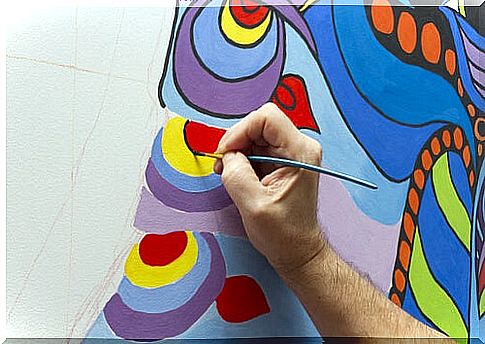Mihály Csíkszentmihályi, Between Creativity, Research And Flow

The concept of “flow” or “experience of flow” has gained increasing prominence since the late 1990s. Related to the feeling of being in total harmony with a project that is enjoyed to the fullest, it was originated by the Hungarian psychologist Mihály Csíkszentmihályi, one of the most recognized researchers in Positive Psychology, and a professor at the University of Claremont, California.
Along these lines, Csíkszentmihályi also stands out for her research on mental well-being, creativity, fun and happiness. Although we can find points of contact between each of these elements, today’s proposal is to dwell on some of the most notable aspects of his work on the experience of flow and creativity.
From the early days of his professional life, Mihály Csíkszentmihályi raised the focus of his research to understand where in our life we experience the subjective experience of happiness. It began with cases of people who stood out for their creativity, such as artists and scientists, wondering what made them feel that it was positive to dedicate so much of their lives to their projects, even when they did not plan to benefit from them. During the investigations, when interviewed, these people indicated that in the moments when they were deeply focused on their projects, they felt that things simply “flowed.” Description that originated the concept of “flow”.
Basic conditions, present during the flow experience:

* A high level of concentration, which can even make you lose track of time. As if somehow, one entered a “different reality”, without going to an amusement park, a theater, or another place that helps to experience a reality different from the one experienced when performing routine tasks. The interviewees only needed basic elements such as paper, pencil, etc., which would allow them to capture existing things in their minds. It was in those moments that they managed to create a new reality.
* Ecstasy, linked to the previous point and understood as an intense enjoyment, far from routine.
* Feeling of knowing well what is done.
* Peace of mind, understood as the absence of harmful stress.
In turn, the interest in studying creativity is not new, since it has great weight in different areas such as science, art, work and education. Mihály Csíkszentmihályi, states that it translates into results that enrich culture, have a positive impact on the quality of life, and offer possibilities to build a more productive and interesting existence.

His research in this field led him to propose a systems model that, in addition to the individual characteristics of the subject, encompasses social and cultural aspects. Thus, the “Systems Model for Creativity” came to light in 1998. Here it argues that creativity results from three aspects in constant interaction: a culture with symbolic rules, a subject that adds novelty to these rules, and experts who make this innovation valid and recognized.
Each of these three aspects makes it possible for a new idea or discovery to take place, recognition and application. Hence his emphasis that when studying creativity, Psychology should not understand it only as a mental process.
With research that dates back to the 50s, Mihály Csíkszentmihályi has given a twist to the way of thinking academically and socially, creativity, as well as the concept of flow and its role in our desires, projects and quality of life.









